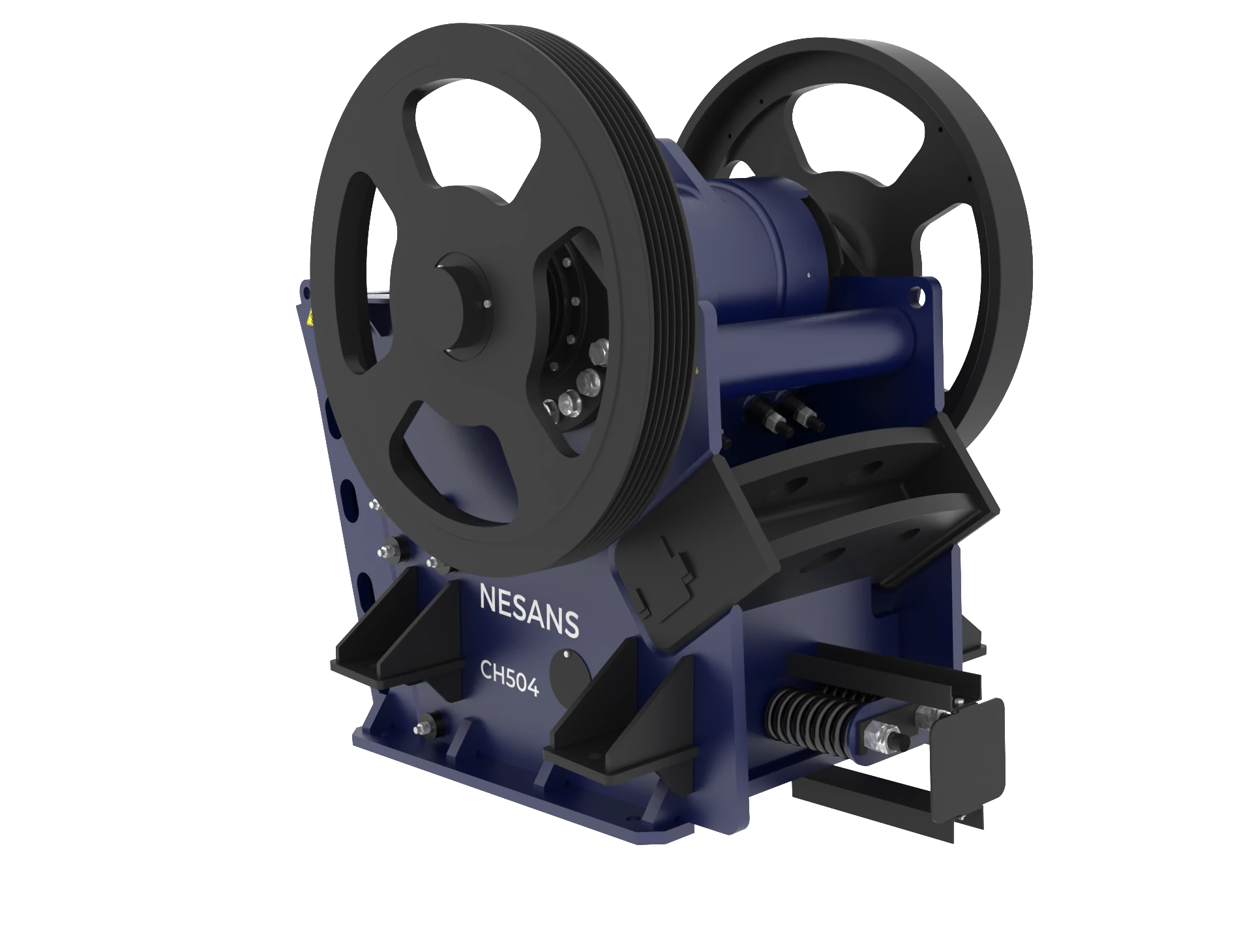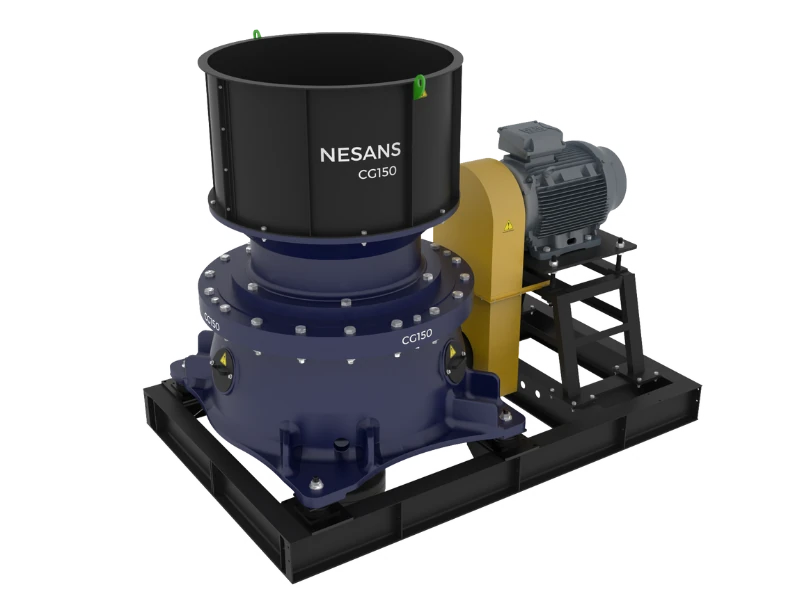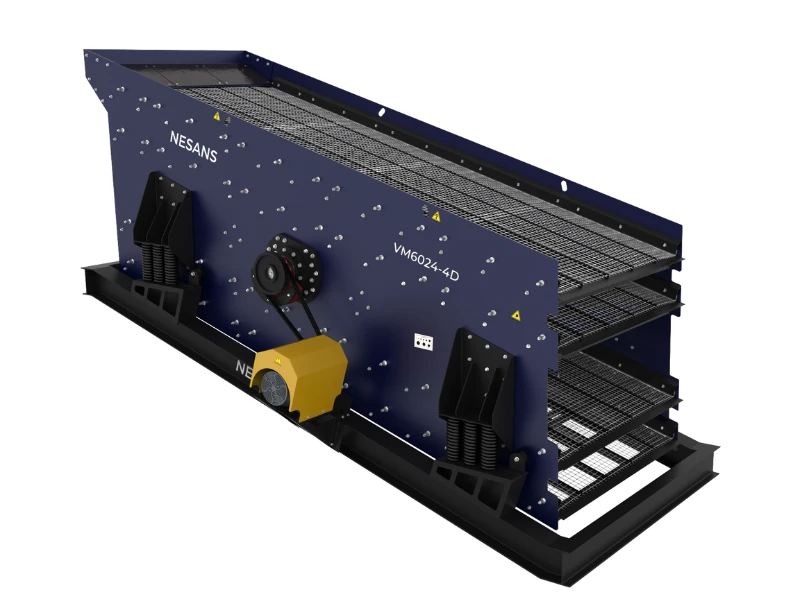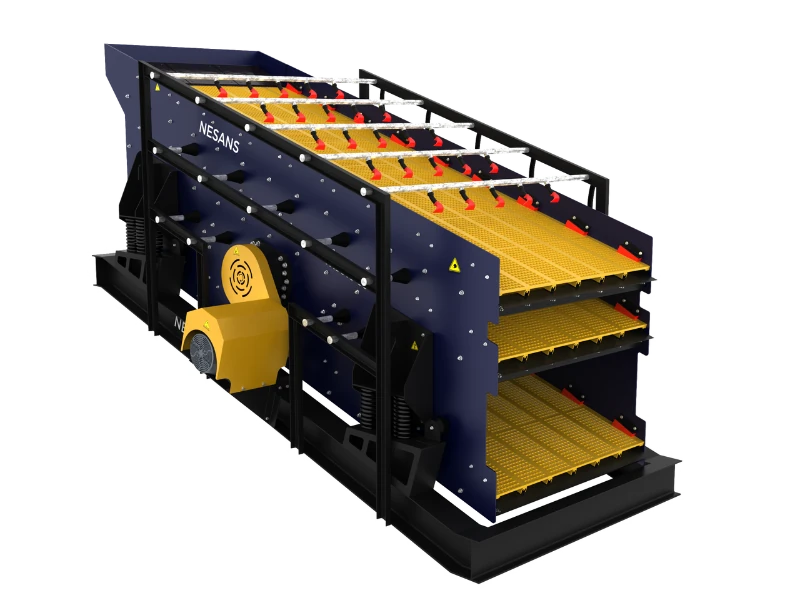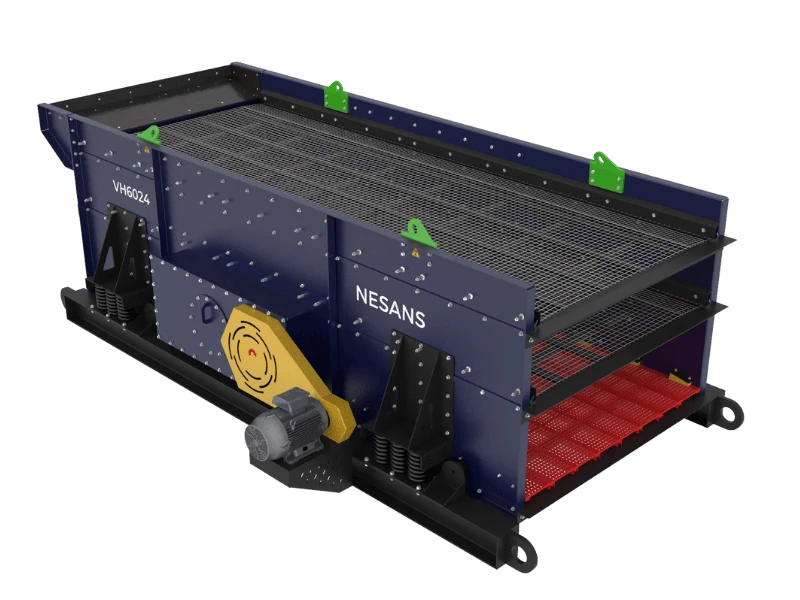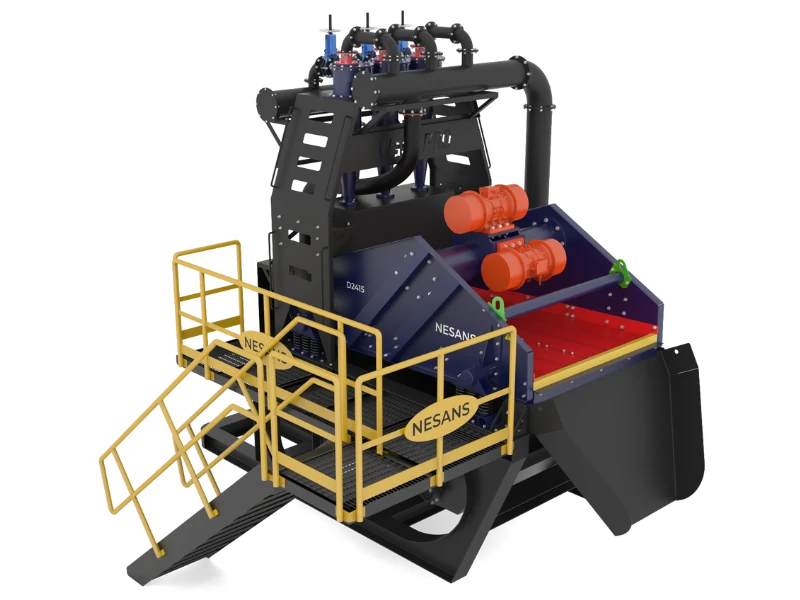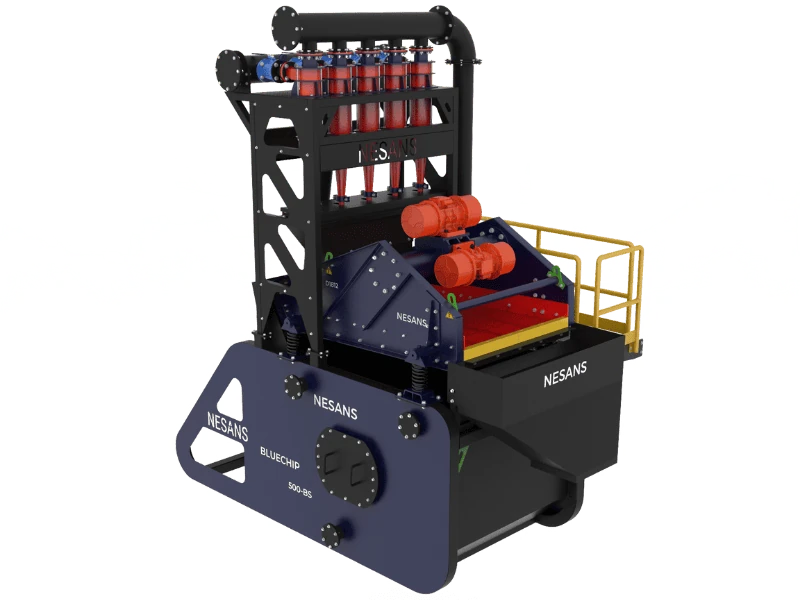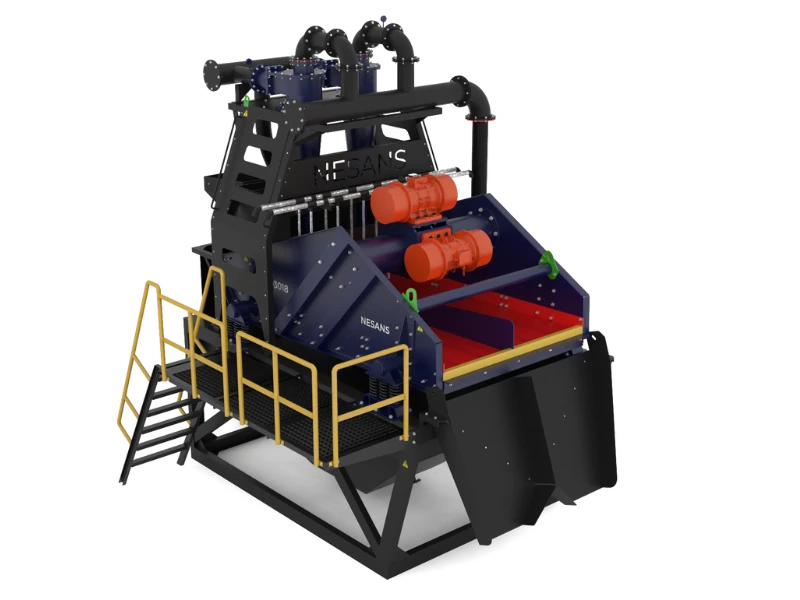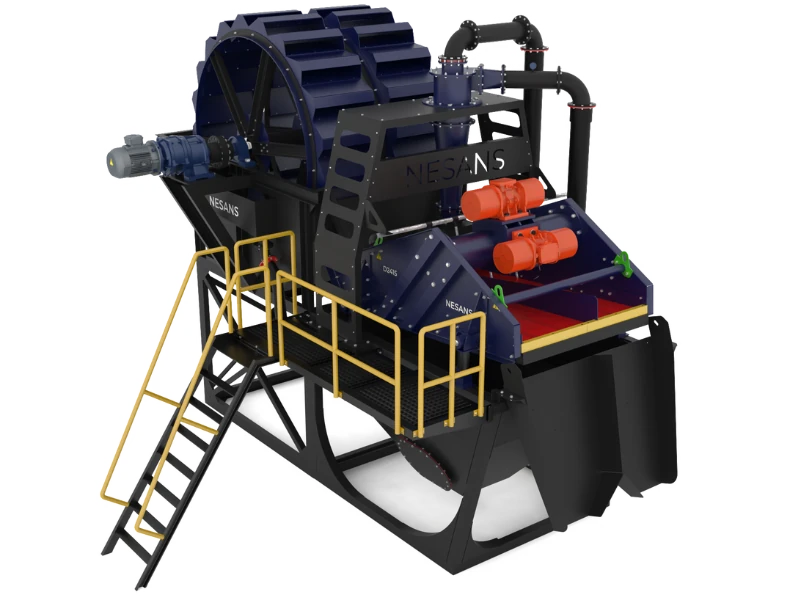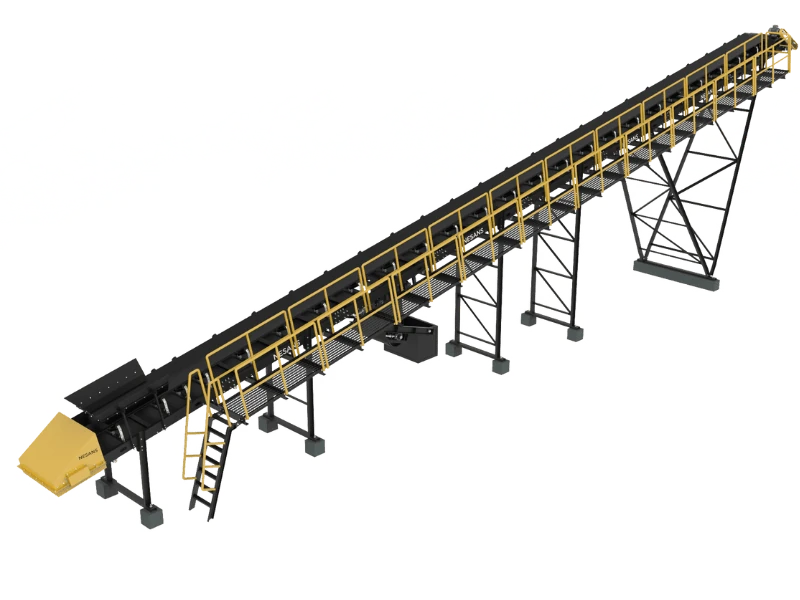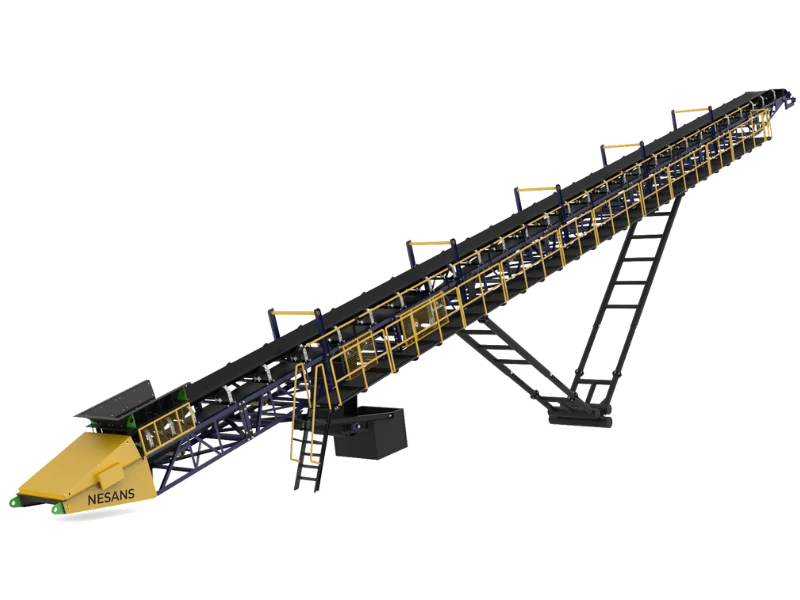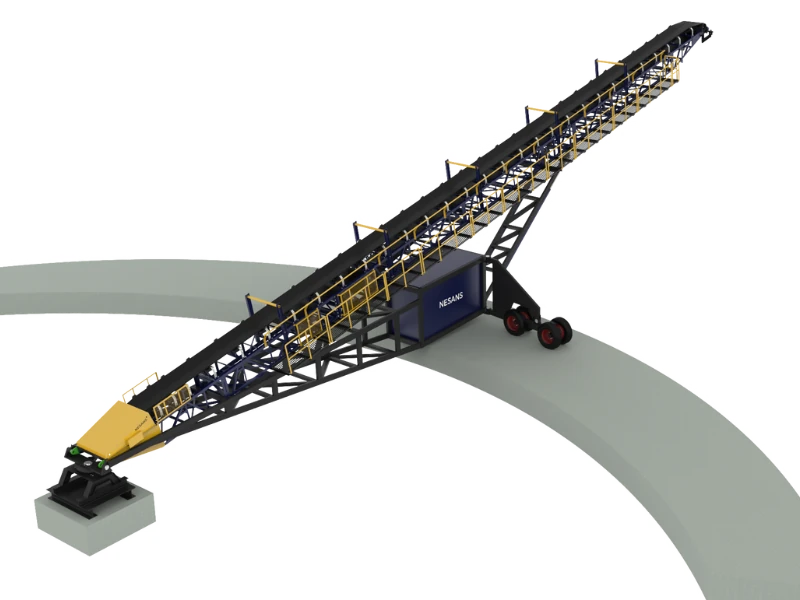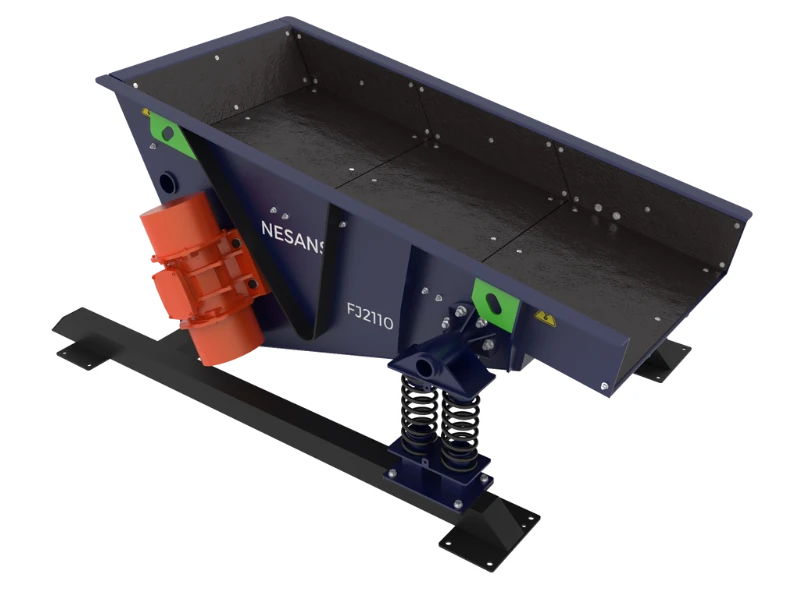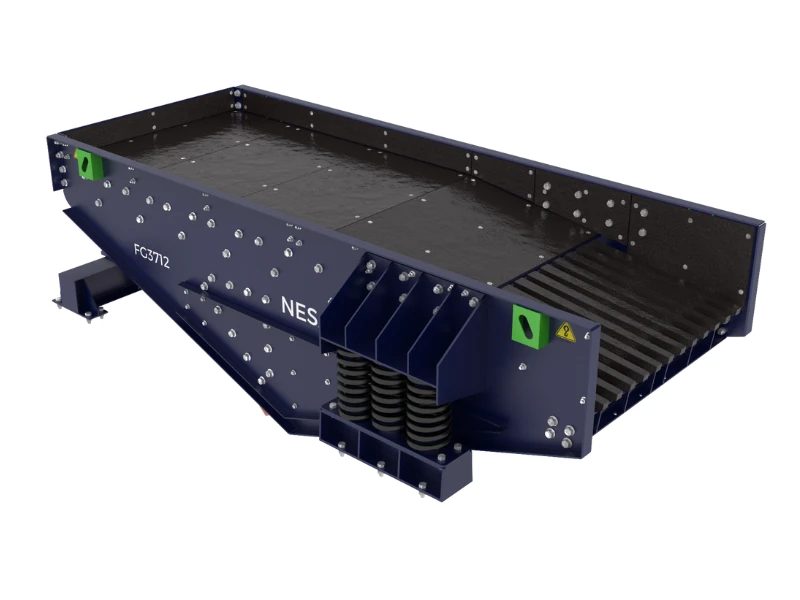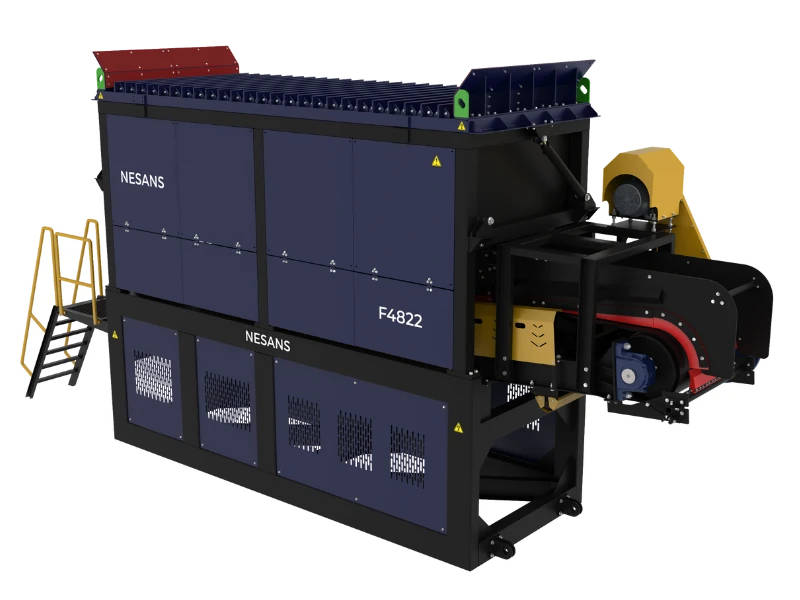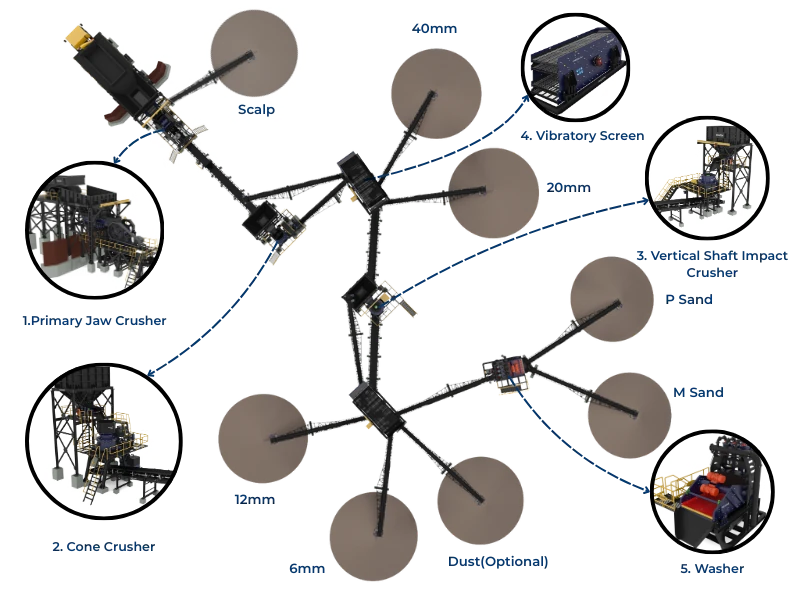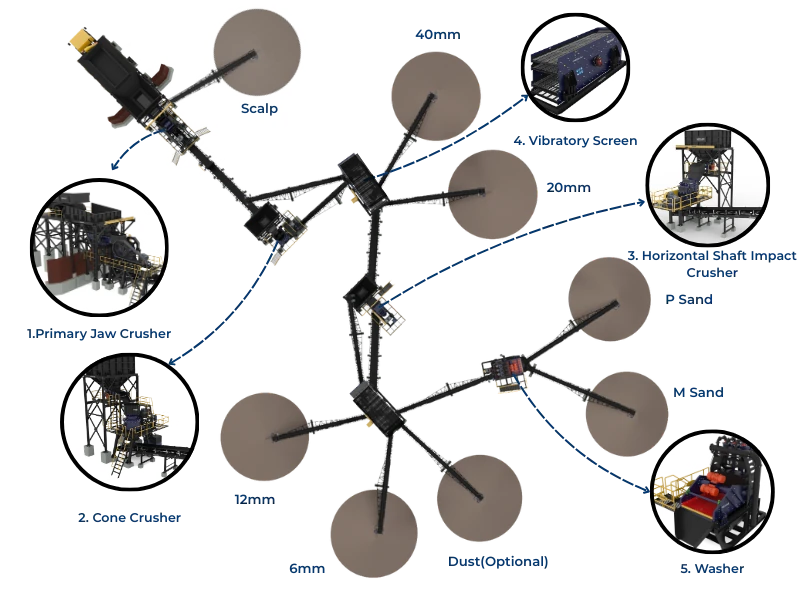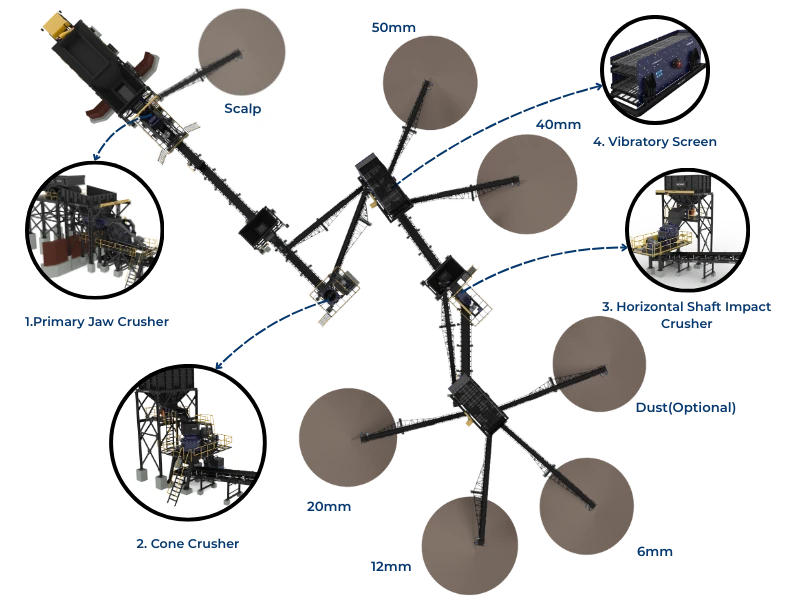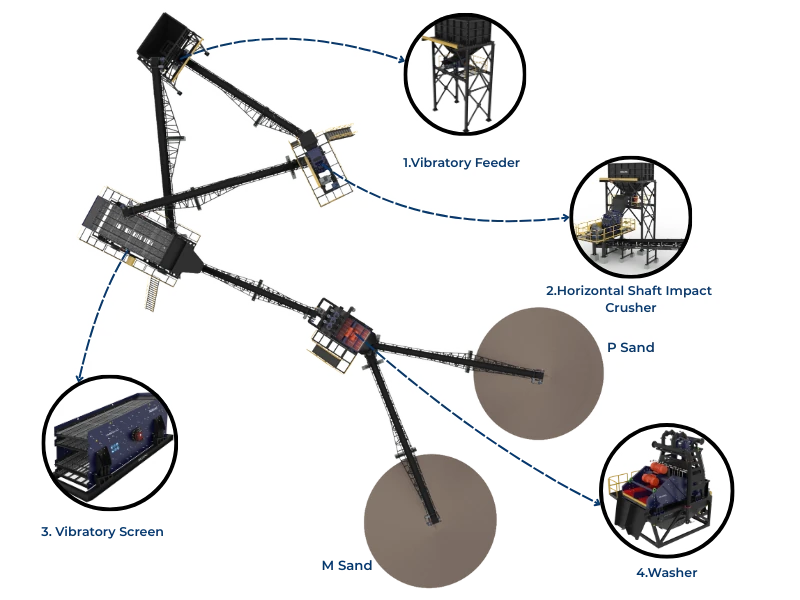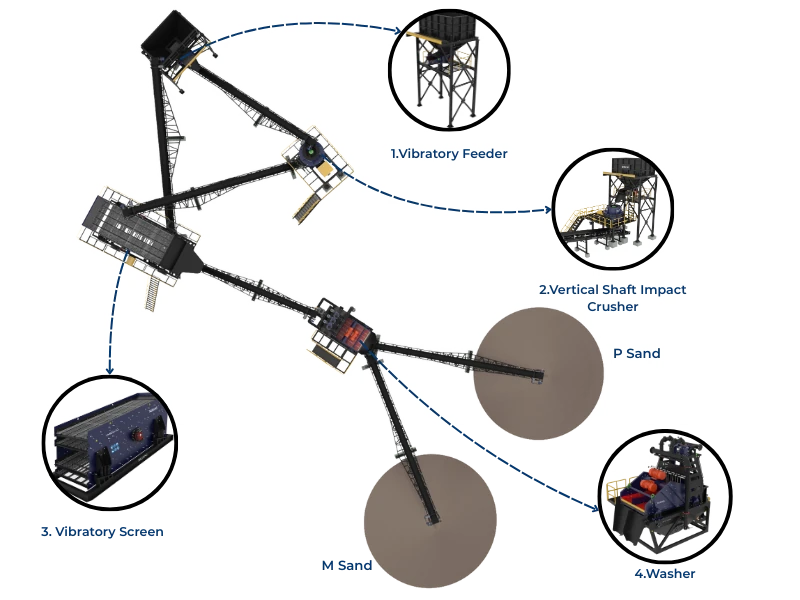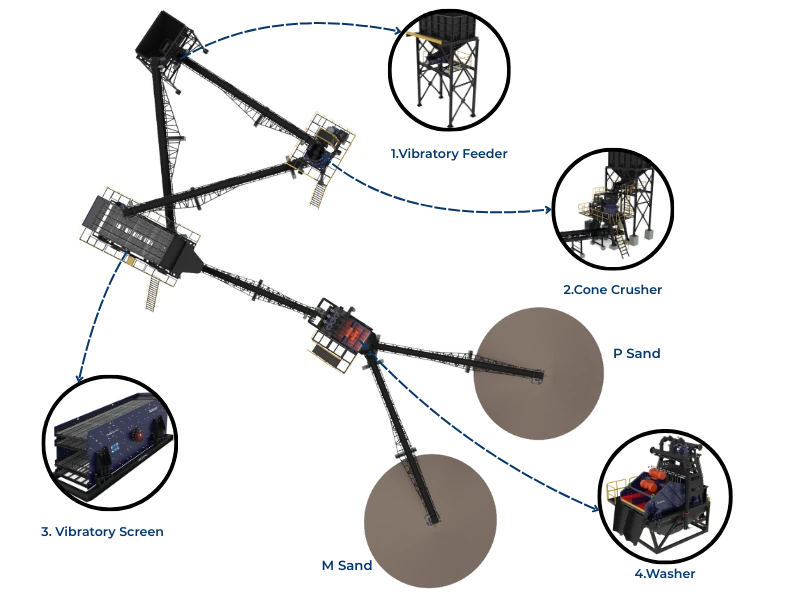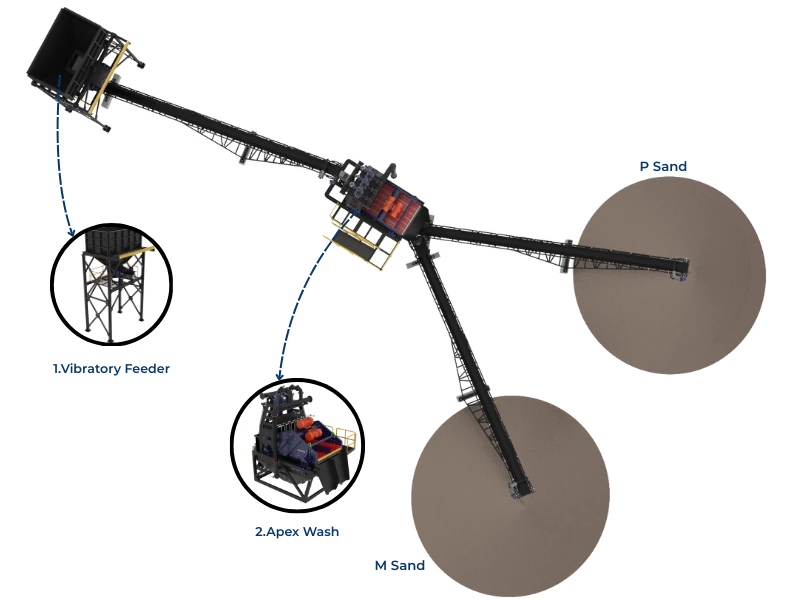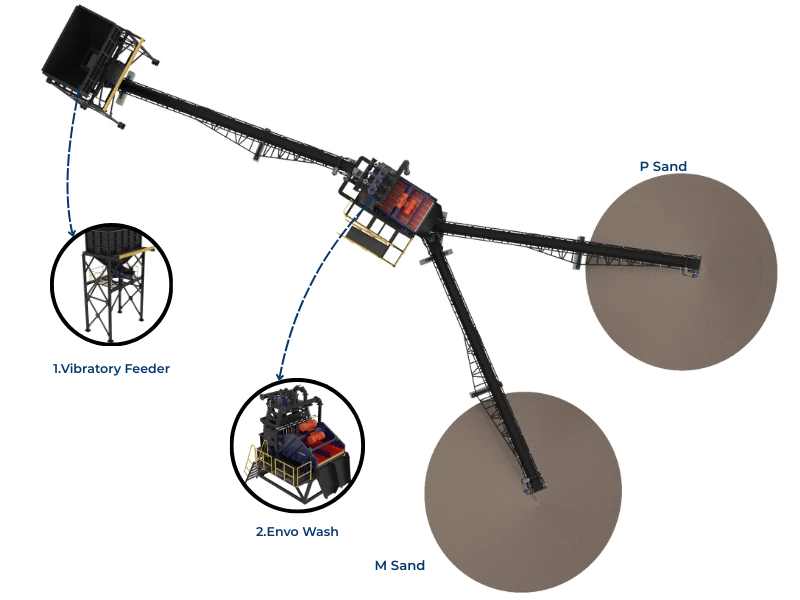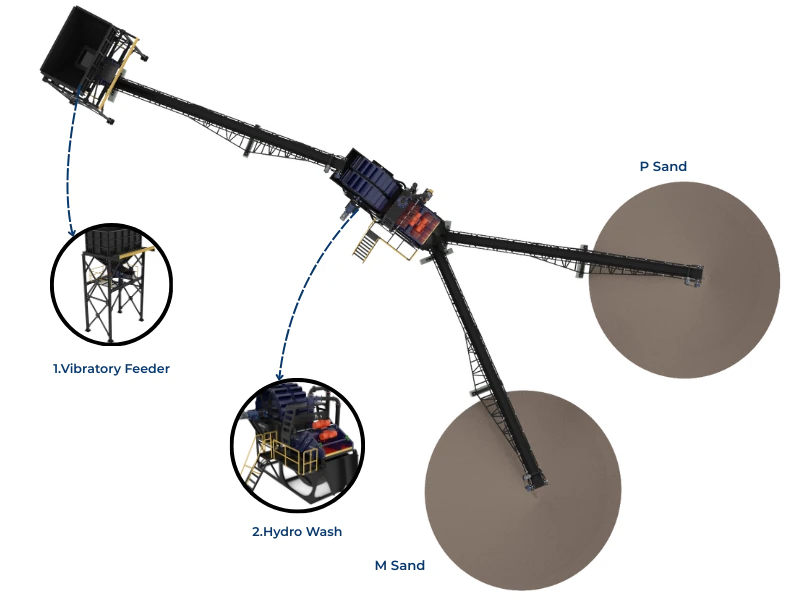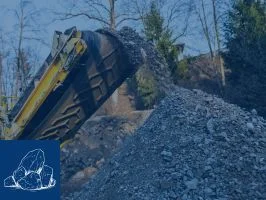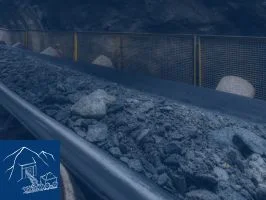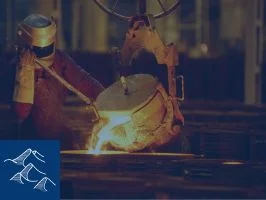Conveyor belt failures account for over 30% of unplanned downtime in aggregate processing plants. This comprehensive guide shares proven maintenance strategies from Nesans engineers that can reduce downtime by up to 50%.
Understanding Conveyor Belt Failure Modes
Before diving into maintenance tips, it's crucial to understand the common failure modes:
- Belt Mistracking: Causes edge wear and spillage
- Carry-Back Material: Builds up on return rollers causing damage
- Belt Wear: From abrasive materials reducing belt life
- Splice Failures: From improper installation or maintenance
- Idler Failures: Leading to belt damage and tracking issues
1. Implement Daily Visual Inspections
Daily walkthroughs can identify 80% of potential issues before they cause failure:
- Check belt alignment at multiple points along the conveyor
- Look for material buildup on return rollers
- Inspect belt edges for fraying or damage
- Listen for unusual noises from bearings or rollers
- Monitor belt tracking at loading and discharge points
Pro Tip: Use a thermal camera during inspections to identify bearing failures before they occur. Bearings typically run 20-30°C above ambient temperature; anything higher indicates a problem.
2. Master Belt Tensioning
Proper belt tension is critical for longevity and performance. Too tight causes excessive wear and bearing failures; too loose causes slippage and mistracking.
Tension Calculation Formula:
Minimum tension = (Belt weight + Material weight) × 1.5 × Center distance
For a 1000mm wide belt carrying 500 TPH over 50 meters:
- Belt weight: ~25 kg/m
- Material weight: ~30 kg/m (depends on speed)
- Minimum tension: (25 + 30) × 1.5 × 50 = 4,125 kg
Adjustment Procedure:
- Measure take-up travel - should be at 1/3 to 1/2 of total travel
- Adjust tensioning winches or screws evenly on both sides
- Run empty and check for proper tracking
- Load gradually and monitor tracking under load
- Recheck after 24 hours of operation
3. Optimize Belt Cleaning Systems
Material carry-back is the silent killer of conveyor belts. A single gram of material per meter adds up to tons over time, causing:
- Buildup on return rollers damaging belt covers
- Spillage creating safety hazards
- Increased cleaning labor costs
- Premature belt replacement
Primary Scraper Setup:
Position primary scrapers at 45° angle, 2-3mm from belt surface. Use tungsten carbide blades for abrasive materials like granite and basalt.
Secondary Scraper Setup:
Install 3-4 meters after primary scraper. Use diagonal or V-plow design for sticky materials like clay or wet sand.
4. Prevent Belt Mistracking
Belt mistracking causes 40% of premature belt failures. Common causes and solutions:
| Cause | Symptom | Solution |
|---|---|---|
| Structure misalignment | Belt consistently runs to one side | Check frame level; adjust support structures |
| Material loading off-center | Belt pulls toward heavy side | Install flow control chutes; center material stream |
| Seized rollers | Belt wanders intermittently | Replace failed bearings; implement rotation schedule |
| Belt splice misalignment | Periodic tracking issues | Ensure splice is square; re-splice if necessary |
5. Establish Roller Maintenance Schedule
Failed rollers damage belts rapidly. Implement this inspection schedule:
- Weekly: Spin test 10% of rollers by hand when stopped
- Monthly: Acoustic inspection of all rollers using ultrasonic detector
- Quarterly: Remove and grease 25% of rollers (rotate through all annually)
- Annually: Replace all rollers with more than 30% bearing play
6. Protect Against Cover Damage
The belt cover protects the carcass from damage. Common damage types and prevention:
- Impact Damage: Install impact beds at loading points; use 50mm rubber impact bars spaced at 100mm centers
- Abrasion: Use belts with appropriate cover grade (ASTM grade based on material)
- Cuts and Gouges: Remove tramp material; install magnetic separators upstream
- Chemical Attack: Select cover material resistant to oils, acids, or alkalis present in material stream
7. Maintain Proper Splice Integrity
Splice failures cause catastrophic belt damage. Follow these guidelines:
Vulcanized Splices:
- Use certified splicing contractors
- Maintain cure temperature at 145-150°C
- Cure time: minimum 45 minutes for multi-ply belts
- Inspect splice weekly for first month after installation
Mechanical Fasteners:
- Check fastener tightness weekly
- Replace any fasteners with bent or broken teeth
- Ensure proper fastener selection for belt strength and pulley diameter
8. Lubrication Best Practices
Proper lubrication extends bearing life by 3-5x:
- Grease Type: Use NLGI Grade 2 lithium-based grease for most applications
- Frequency: Every 500 operating hours or quarterly (whichever comes first)
- Quantity: Fill to 1/3 - 1/2 bearing volume; over-greasing causes failures
- Procedure: Clean grease fitting; pump slowly until slight resistance; wipe excess
9. Monitor Environmental Factors
Environmental conditions significantly affect belt life:
- Temperature: Most belts rated for -20°C to +60°C; beyond this requires special covers
- Moisture: Wet conditions require frequent cleaning; consider covers or enclosures
- UV Exposure: Outdoor belts degrade faster; use UV-resistant covers or protective housings
- Dust: Fine dust penetrates bearings; use sealed bearings in dusty environments
10. Implement Predictive Maintenance
Modern condition monitoring catches problems early:
- Vibration Analysis: Install sensors on drive pulleys to detect imbalance and bearing wear
- Thermal Imaging: Monthly thermal scans identify hot bearings and seized rollers
- Belt Speed Monitoring: Detect slippage indicating tension loss or drive issues
- Load Monitoring: Track material flow to optimize belt loading and prevent overload
Maintenance Schedule Template
| Interval | Task | Time Required |
|---|---|---|
| Daily | Visual inspection; Clean scrapers; Check tracking | 15 minutes |
| Weekly | Roller spin test; Fastener check; Splice inspection | 45 minutes |
| Monthly | Acoustic inspection; Thermal scan; Tension check; Clean pulleys | 2 hours |
| Quarterly | Lubricate bearings; Deep clean system; Replace worn components | 4 hours |
| Annual | Complete system audit; Belt measurement; Major component replacement | 8 hours |
Cost-Benefit Analysis
Implementing this maintenance program typically shows:
- 50% reduction in unplanned downtime
- 30% increase in belt life expectancy
- 40% decrease in emergency repair costs
- ROI within 6 months for most operations
For a plant running 5,000 hours annually with downtime costing ₹50,000/hour, reducing downtime from 200 to 100 hours saves ₹50 lakhs annually.
Conclusion
Conveyor belt maintenance isn't rocket science, but it requires discipline and systematic execution. Implement these 10 tips progressively, starting with daily inspections and proper cleaning, then advancing to predictive monitoring as your program matures.
Need help implementing a maintenance program? Contact Nesans' service team for on-site training and support. Our engineers have helped over 200 plants reduce conveyor downtime through structured maintenance programs.

